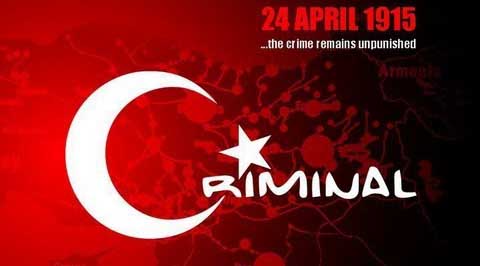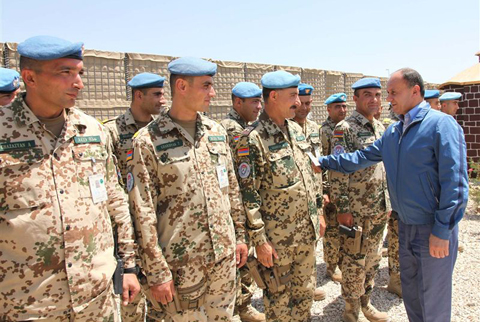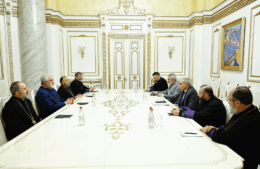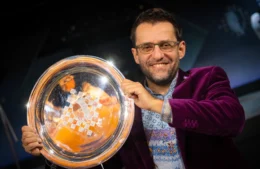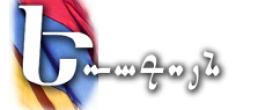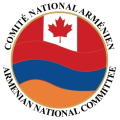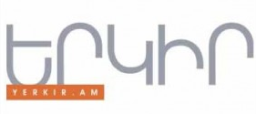|
Mégo’s first communion in Beirut in the mid 1970s, surrounded by his parents and siblings.
|
On his mother’s side, Mégo’s family comes from the sandjak (district) of Alexandretta, an area on the Syrian coast annexed by Turkey in 1939 with the aid of France. His grandparents, like most Armenians of the sandjak, fled to Syria and settled in Damascus, where Mégo’s maternal grandfather Garabed Sumundjian became a cook.
Bombs define career choices
The bombings of the Lebanese Civil War left an everlasting impression on Mégo, and eventually resounded throughout his career with MSF. Mégo, his sister Maral and brother Ara spent their school years close to the demarcation line, where they endured bombings practically ever night. They had to leave Beirut several times in the middle of winter to find refuge in the mountains, where the family rented a vacation home in the summer. “We played soccer on a little lot in front of a big building (the Burdj el Murr tower), from which a sniper used to shoot to scare us. We hid, laughed and went on playing. But one day he threw a bomb, and one of our friends, a very pretty girl, was wounded and lost an eye,” Terzian remembers resignedly.
“I belong to a generation that saw the war up close.”
The eldest of the three, Mégo registered to attend medical school at Lebanese University. At the end of the 1980s a large part of Lebanon was under Syrian occupation, and the voice of Lebanese General Michel Aoun, calling for a war of liberation, appealed to Terzian.
Fighting began in 1989 and quickly turned to Syria’s advantage. Terzian’s parents, fearing that their son would be arrested, decided to send him to the University of Yerevan to finish his studies. At the time, Armenia was still under Soviet rule but undergoing a transition would lead the country to independence two years later. “I lived on the inside of this whole period, I can remember the dark years, the lack of electricity, the cold,” he says.
Although he wasn’t active in the Karabakh movement, Terzian had a few Armenian friends from Lebanon, fellow students, who left for the frontlines to fight the Azeris. “When my friends came back from the front to rest, we got together and discussed the situation in Karabakh,” he recalls.
Then came 1994. In May, a cease-fire between Armenians and Azeris was signed. Terzian was in his fourth year of medical studies, and a French doctor from MSF asked him to join translation missions to Karabakh. He jumped at the opportunity. “With my Lebanese passport, it was hard to go to Karabakh, so I took advantage of this humanitarian mission to visit the region. I translated medical protocol guides for Karabakh’s doctors – we distributed a huge number of medicines and explained their use, but never so much as counted them. Looking back, I realize how much our working methods have evolved since then.”
Terzian nostalgically recalls the days spent in remote villages of Karabakh, when the fighting had just ended. “In the morning, we visited the villagers beginning at 9 a.m., and we stayed all day – there was coffee, cognac, welcome toasts – one after another.”
Mégo eventually married an Armenian from Yerevan and earned a degree in pediatrics. He worked as a doctor in a pediatric hospital in Arech, near Erebouni, on the outskirts of Yerevan. At the same time, he practiced medicine in an institution that cared for street children. “The conditions were horrible. Thanks to MSF, we managed to facilitate social aid and allow those children to reintegrate in society,” he says.
